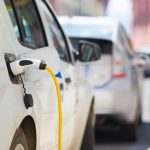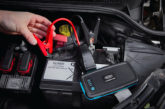Steve Carter looks at perhaps the most prominent change to the automotive aftermarket in recent times: the advent of hybrid (PHEV) and electric vehicles (EV).
The automotive industry has always been in a state of flux, constantly having to adapt to the next set of regulations for safety or emissions. However, the change that is coming now will make all previous changes pale into insignificance, as more and more vehicle manufacturers begin to publicise the beginning of the end of the internal combustion engine and introducing the era of electric vehicles.
In the early 2000s, I became involved in hybrid vehicles, particularly the Toyota Prius and Honda Insite. Whilst they certainly did bring a different aspect to the automotive world, it was hard to see how this was going to become such a game changer today. The more you looked at this concept, the more you accepted that the limiting factor was the battery, and how was this ever going to change within the confines of the automotive industry?
Batteries, in particular lithium ion, are now an integral part of almost every person’s daily activity, from mobile phones to electric drills. This has allowed the technology to develop at an unprecedented rate, which no automotive manufacturer could have predicted, causing the cost price to collapse from $750 per kWh to $140 per kWh. In five years. This has resulted in the Swiss Investment bank UBS predicting that, by 2018, EV cars will hit price parity with petrol vehicles. This is the game changer; vehicle manufacturers will have no choice but to adopt an EV strategy. Just look at Volvo.
So, what are the fundamental differences between a 2008 hybrid and a more recent PHEV/EV? The most obvious is the battery type and energy density. In a Prius, we had a battery of 1.2kWh. However, we could only use about half of this power to protect the longevity of the battery. Remember this was NiMH (this is not necessary with lithium ion).
With lithium ion batteries used in PHEVs, we are seeing battery sizes in the region of 10 to 20kWh. This will give us a range of some 20 to 50 miles on a single charge. Of course, the internal-combustion engine can then take over and drive the car either as mechanical direct drive or as a generator, as it would do in the Vauxhall Ampera.
If we take a look at a full EV, then the battery size is typically somewhere in the region of 40 to 100kWh, giving the vehicle anywhere between 200 and 400 miles of range on a single charge. So, clearly, we need some form of on-board charging and ideally some form of rapid charging. Most vehicle manufacturers now offer these. Take the Nissan Leaf for example. It has a 6.6kW AC charger for domestic charging, which would typically charge the car at 32A and take approximately four hours to fully charge. Another option would be a rapid DC charge, referred to as CHAdeMO, typically charging at 110A and bringing the battery to 80% in half an hour.
So we now have a few different charging sockets:
- Type 1 AC mode 3
- Type 2 AC mode 3
- Type 4 DC Mode 4
These sockets have an IP rating of 65, which means they are waterproof up to falling rain. They should not be in operation during a jet wash.
All this charging is going to create a bit of heat, so we have to cool the on-board charger, which is usually via an independent cooling system. Now we have to cool the battery when rapid DC charging the battery pack, which, in the case of the Outlander PHEV, is done through its own AC evaporator that runs independently to the car’s cabin AC.
I have only been able to scratch the surface with this article. For the past 18 months, I have been involved with the IMI, HSE and VMs steering committee to discuss a whole new range of qualifications for EVs and PHEVs, endorsed by the HSE, which will become available from the 1st September.










